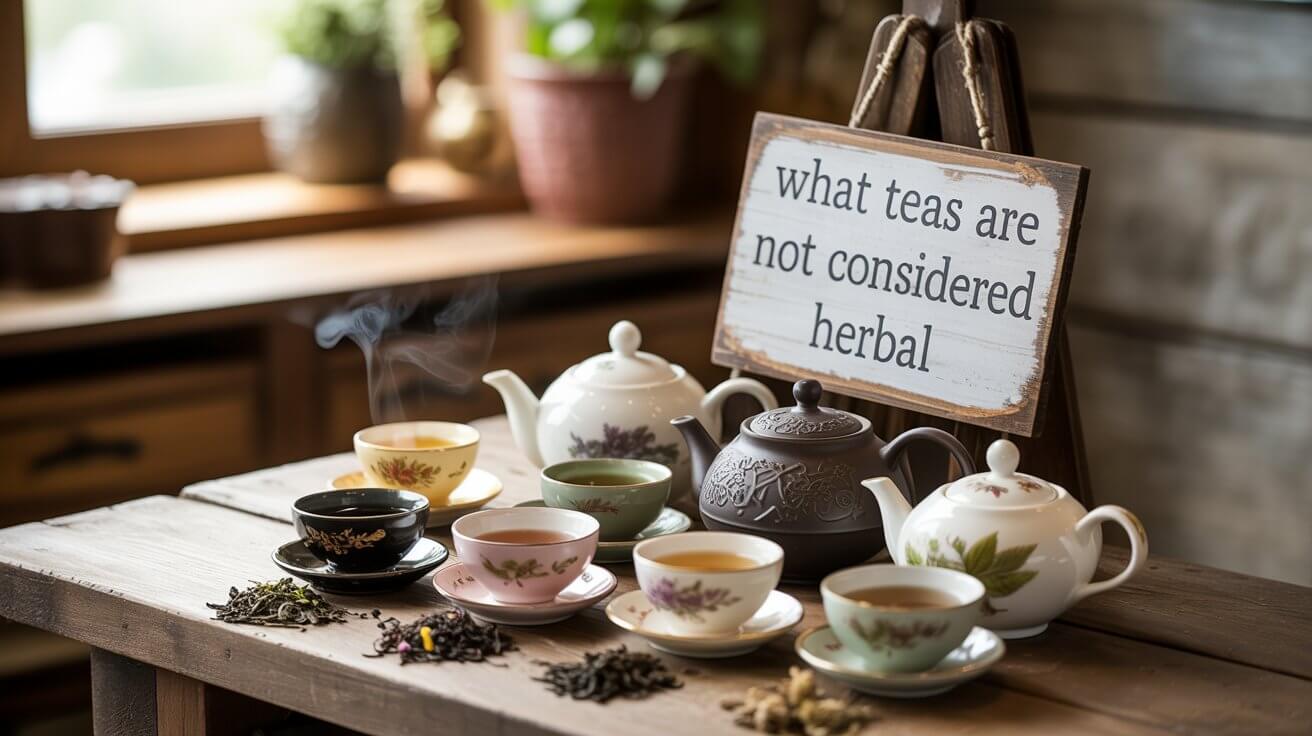Tea lovers often assume every type of tea black, green, oolong, or chamomile falls into the same category. However, that’s not quite true. While herbal teas are popular for their soothing, caffeine-free nature, most of the world’s favorite teas are actually not herbal.
In this updated 2025 guide, you’ll learn exactly what teas are not considered herbal, what makes them unique, and how they differ from caffeine-free herbal blends like All Day Slimming Tea.
What Defines a Herbal Tea?
Herbal teas, also known as tisanes, are beverages made by steeping herbs, flowers, spices, or fruits in hot water. They don’t come from the traditional Camellia sinensis tea plant. Instead, they rely on botanicals like:
-
Chamomile
-
Peppermint
-
Hibiscus
-
Rooibos
Most herbal teas are naturally caffeine-free, making them ideal for relaxation, digestion, and evening rituals. For example, All Day Slimming Tea combines natural herbs that promote metabolism and detox without relying on caffeine perfect for those who want wellness without the jitters.
What Teas Are Not Considered Herbal?
Teas that are not herbal are called true teas. These come from one plant the Camellia sinensis but are processed in different ways to create distinct flavors and caffeine levels.
Here are the five main types of non-herbal teas you should know:
1. Black Tea
Black tea is fully oxidized, resulting in a deep color and bold flavor. It’s the most widely consumed tea worldwide and contains the highest caffeine among true teas.
Popular varieties:
-
Assam
-
Darjeeling
-
Earl Grey
Why people love it:
It’s energizing and supports mental alertness, making it a great morning drink.
2. Green Tea
Green tea undergoes minimal oxidation, preserving its antioxidants called catechins, which are linked to improved metabolism and fat burning.
Notable example: Japanese Matcha, a powdered green tea that offers concentrated nutrients and antioxidants.
Health benefits (2025 research):
Recent studies highlight green tea’s role in supporting metabolic health and gut microbiome balance, making it a perfect partner for herbal weight-support blends.
3. Oolong Tea
Oolong tea sits between green and black tea in both flavor and oxidation. Its floral, fruity aroma and moderate caffeine make it a balanced choice for those who want energy without overstimulation.
Fun fact: Traditional oolong varieties from Taiwan and China are now trending again in 2025 for their potential to support fat oxidation naturally.
4. White Tea
The most delicate of all, white tea is made from young leaves and unopened buds. It’s lightly processed and has the lowest caffeine content among true teas.
Why it stands out:
White tea is rich in polyphenols that may protect skin and reduce oxidative stress a gentle, elegant choice for wellness enthusiasts.
5. Pu-erh Tea
Pu-erh is a fermented tea aged over time to develop a smooth, earthy flavor. It’s prized for its digestive benefits and probiotic-like properties.
In recent years, health-conscious drinkers have started combining Pu-erh in the morning and herbal blends like All Day Slimming Tea at night for a balanced metabolism-supporting routine.
Why These Teas Aren’t Herbal
The difference between herbal and non-herbal teas comes down to origin and processing:
| Feature | Herbal Tea | Non-Herbal Tea |
|---|---|---|
| Source | Herbs, flowers, fruits | Camellia sinensis plant |
| Caffeine | Naturally caffeine-free | Naturally caffeinated |
| Processing | Simple infusion | Oxidation, fermentation, or aging |
| Example | Chamomile, peppermint | Black, green, oolong, white, pu-erh |
So, while herbal teas soothe and relax, true teas stimulate and energize both offering unique health benefits.
Choosing Between Herbal and Non-Herbal Teas
Your ideal tea depends on your health goals and daily rhythm:
-
Choose herbal teas like All Day Slimming Tea if you want:
-
A caffeine-free way to boost metabolism
-
Support for digestion and detox
-
A relaxing evening ritual
-
-
Choose non-herbal teas if you want:
-
A natural caffeine source
-
Improved alertness and focus
-
Antioxidant-rich energy for your mornings
-
Many tea drinkers now combine both enjoying green or oolong tea early in the day, then switching to herbal slimming blends at night to unwind naturally.
Final Thoughts
So, what teas are not considered herbal?
Any tea made from the Camellia sinensis plant including black, green, oolong, white, and pu-erh is classified as a true tea, not a herbal one.
Each variety has its own caffeine level, health perks, and traditional charm. Meanwhile, herbal blends like All Day Slimming Tea offer the best of both worlds natural herbs that gently support your metabolism without caffeine crashes.
Whether you start your day with a bold black tea or end it with a calming herbal infusion, you can enjoy the full spectrum of tea’s health and wellness benefits in a balanced lifestyle.


Leave a Reply